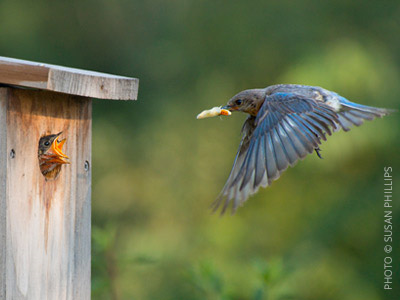Intelligent nest box camera to monitor birds and biodiversity

Goal of the project:
Design an intelligent nest box camera system that can detect, record, and identify:
- The species of bird that is entering the nest box
- The type of prey being brought to the chicks
The aim of this project is to design a more efficient nest box camera for monitoring. The work in this project may involve hardware design (using sensors in addition to cameras) and using Artificial Intelligence to develop an intelligent nest box that provides a high-quality set of images (for example, only birds entering with food in their beak) and the type of food they collect.
The problem:
Automatically detecting and identifying bird species and the type of food they bring to the nest box to feed their chicks provides researchers with a lot of information. For example, what bird species is best to use to combat the oak processionary caterpillar? Commercially available nest box cameras typically record continuously. This quickly leads to a huge amount of video that must be stored and sorted manually – making long-term monitoring impossible. Some models can detect changes to the image and record only when this is detected but cannot distinguish between birds entering the box and other types of movement which results in a lot of clutter in the collected videos.
Background:
Understanding how urbanization affects species interactions is crucial to promote green cites. Studies have shown that the diet of urban insectivorous birds differs from their rural counterparts. This is particularly important during the breeding season, as while adults of many bird species can persist in urban spaces on human-provided food like seeds from bird feeders and human food waste, their chicks typically require insects in order to successfully mature. Thus, not only does the presence of insect populations determine the success of urban birds, but predation pressure from urban adapted birds also determines which insect species can successfully colonize and persist in urban areas. In addition, the city of Amsterdam installed a large number of next boxes in the past 2 years in an attempt to combat the oak processionary caterpillar (Thaumetopoea processionea). However, to date they do not know if birds nesting in these boxes significantly prey on the caterpillars. This study will also answer this question – with important implications for the successful biocontrol of this pest species.
UTwente Supervisor:
Contact Jacob Kamminga for more information: j.w.kamminga@utwente.nl
Client contact information:
Emily Burdfield-Steel, University of Amsterdam, e.r.burdfieldsteel@uva.nl
Project partners:
ARTIS Zoo, City of Amsterdam, Amsterdam Green Campus,
ARISE TEAM (digital species identification, monitoring demonstration sites)
